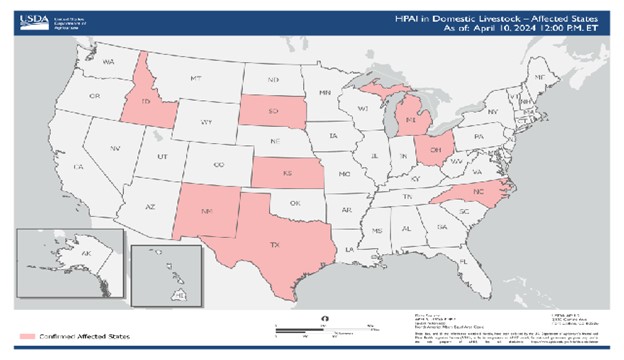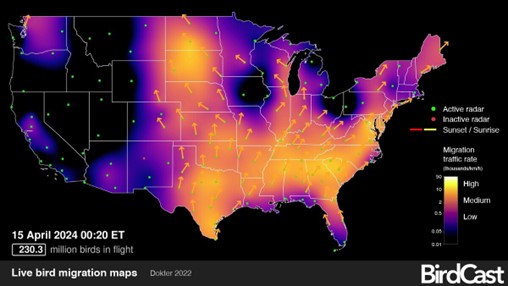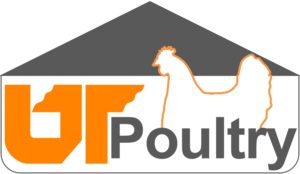Tom Tabler
In recent weeks, the dairy industry in certain regions of the United States have been confronted with Highly Pathogenic Avian Influenza (HPAI) affecting dairy cattle. This has now been renamed Bovine Influenza A Virus (BIAV) to distinguish it from HPAI in birds. As concerns arise, it’s imperative to understand and disseminate accurate and timely information to provide reliable resources for both producers and the public.
What has Happened?
According to the Animal and Plant Health Inspection Service (APHIS) an agency of the United States Department of Agriculture (USDA), there have been reported cases of BIAV affecting dairy cattle in certain areas of the U.S. For the most up-to-date information on the HPAI situation in livestock, refer the USDA-APHIS website. As of April 12, 2024, eight states in the U.S. had reported cases including TX, NM, KS, ID, MI, OH, NC, and SD with a total of 27 dairy farms affected (Figure 1).

Figure 1. Map indicating the states where USDA’s National Veterinary Services Laboratory 9NVSL) has confirmed Bovine Influenza A Virus (BIAV) in a dairy herd. Source: USDA.
Information for Producers:
Producers looking for specific guidance on managing BIAV in livestock can turn to the following resources:
- Information for producers to get more information about this developing situation can be found on this USDA-APHIS website. This website provides information about states where the virus has been detected, latest news, and specific biosecurity information.
- State Departments of Agriculture and State Veterinary Offices: State-level departments of agriculture and state veterinarians will have additional information on the situation and response in their state.
General Information Resources:
For members of the public seeking to understand Bovine Influenza A Virus and its implications, these credible/reliable sources can offer valuable insights:
- The USDA-APHIS website is an excellent source for the most up-to-date information about HPAI and its detection in livestock. On this site, individuals can find information about which states have confirmed cases, latest news, Centers for Disease Control and Prevention resources, and Food and Drug Administration resources.
- Food and Drug Administration (FDA): The FDA website states that “at this time, there continues to be no concern that this circumstance poses a risk to consumer health, or that it affects the safety of the interstate commercial milk supply because products are pasteurized before entering the market.” Additional information from the FDA regarding milk safety can be found here.
- Centers for Disease Control and Prevention (CDC): The CDC provides valuable insights into avian influenza, including its impact on human health and strategies for prevention. For more information, visit their website.
The HPAI outbreak in poultry continues with breaks at a 1.9 M head table egg operation in TX, a 1.9 M head table egg operation and a 2.1 M head table egg operation in MI earlier this month. Spring waterfowl migration season is in full swing (Figure 2) and will remain so for the next several weeks. The importance of biosecurity cannot be overstated at poultry and livestock operations during this time.

Figure 2. Bird migration map from April 15, 2024. Source: https://birdcast.info/migration-tools/live-migration-maps/
As stewards of animal health and welfare, UT Animal Science/Extension remains committed to supporting our stakeholders and constituents with reliable information and resources. Our team of experts will continue to monitor this ongoing situation and we will update as necessary.
